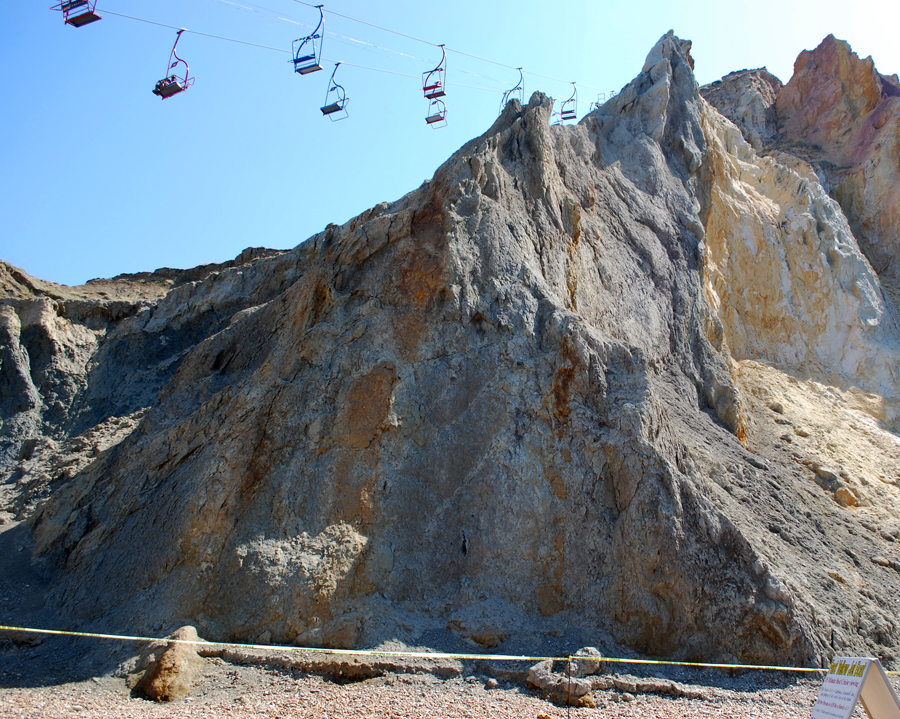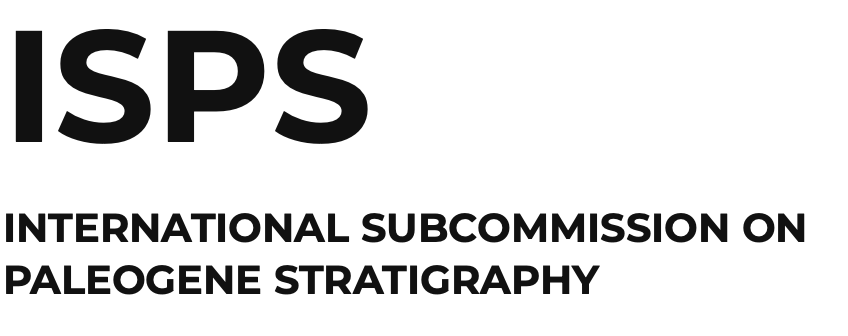Bartonian
The Working Group in charge of the search of the Lutetian/Bartonian GSSP is directed by R. Fluegeman (Ball State University, Indiana, USA).
Base Bartonian at the stratotype and the other sites is defined at a bed containing abundant tests of the larger benthic foram Nummulites prestwichianus, which nearly coincides with the first appearance of the dinocyst Rhombodinium draco. Both taxa are important for correlation within the Hampshire Basin, but are problematic for wider correlation. Magnetochrons C18n, 18r and possibly 19n have been recognized in the Barton Clay of Alum Bay, through calibration to calcareous nannoplankton and dinocyst zones, placing base unit Bartonian within Chron C18r. However, there are problems with interpreting the succession and magnetostratigraphy in Alum Bay, probably related to tectonic disturbance. We therefore hope to improve the microfossil correlation and, by sampling at Barton where the strata are gently dipping, test and extend the existing magnetostratigraphy. This will lead the way to ensuring that any GSSP that is subsequently chosen for the Bartonian will not truncate the unit stratotype.


After the conclusion by Jovane et al. (2010), in which the authors indicate the Contessa Highway section (Gubbio area) as an excellent GSSP candidate for the Lutetian/Bartonian boundary, research has been extended to other sections in the Umbria-Marche Basin including the Bottaccione section, in order to test the reproducibility of the suggested criterion (top of Chron C19n) vs biostratigraphic events. In particular, a new sampling campaign of the Bottaccione section is in progress in the aim of defining more precisely the boundaries of magnetic reversals and to provide magnetic susceptibility and calcium carbonate data series at a very high resolution for detecting orbital cycles across the middle Eocene interval.
Update 2017
Preliminary results of the Bartonian field trip were presented at the GSA 2017 meeting, 22-25 October, in Seattle, Washington, USA. The Alum bay section has been re-visited and a new assessment of the Alum Bay section has been presented using integrated smaller and larger benthic foraminiferal, dinoflagellate, nannofossil and magneto- stratigraphy in order to provide a global correlation of the section. Preliminary results were presented at GSA meeting in Seattle, WA (Cotton et al., 2017).
References
Agnini C., Fornaciari E., Giusberti L., Grandesso P., Lanci L., Luciani V., Muttoni G., Pa?like H., Rio, D., Spofforth D.J.A. & Stefani C. (2011). Integrated biomagnetostratigraphy of the Alano section (NE Italy): A proposal for defining the middle-late Eocene boundary. Geological Society of America Bulletin 123, 841-872.
Cotton, L., Cuesta, L.R., Franceschetti, G., Alegret, L., Iakovleva, A., Hooker, J., King, C., Dinarès-Turell, J., Flugeman, R., & Monechi, S. (2017). Reassessing the Bartonian unit stratotypes: an integrated approach. GSA Abstracts, Seattle, WA.
Jovane, L., Sprovieri, M., Coccioni, R., Florindo, F., Marsili, A. & Laskar, J. (2010). Astronomical calibration of the middle Eocene Contessa Highway section (Gubbio, Italy). Earth and Planetary Science Letters 298, 77–88.

